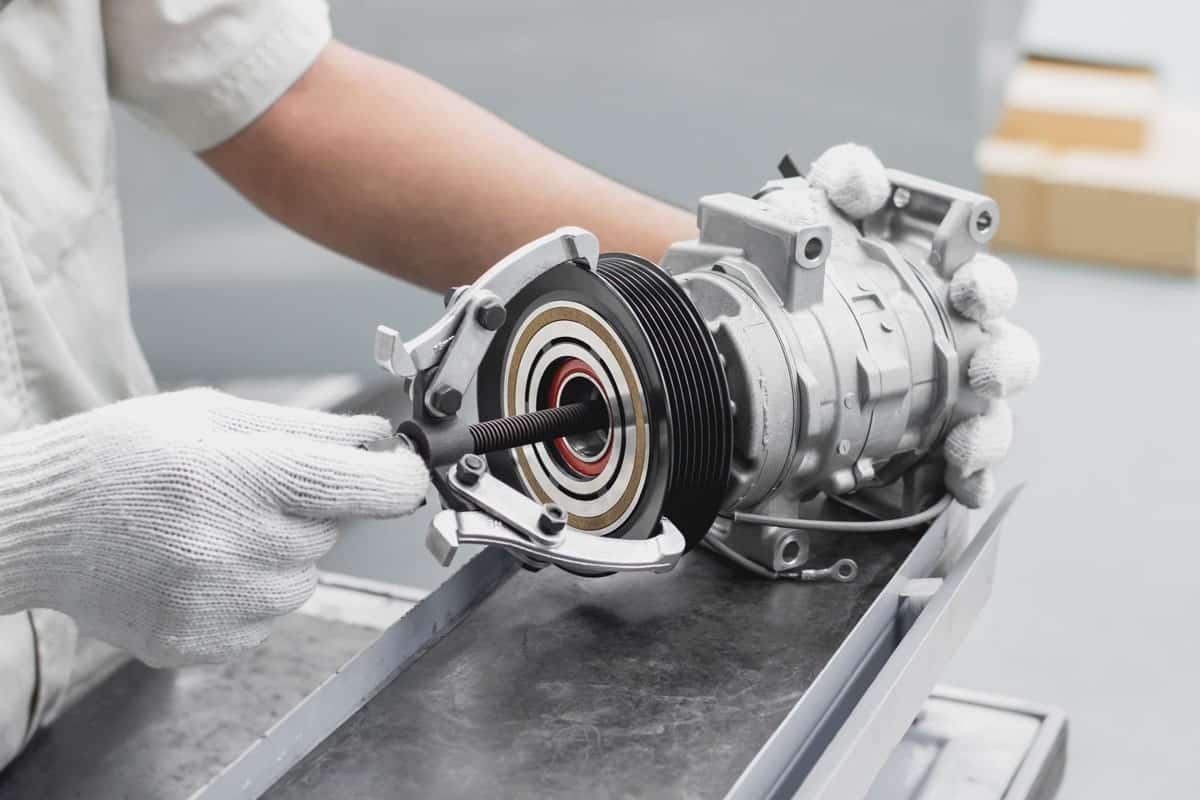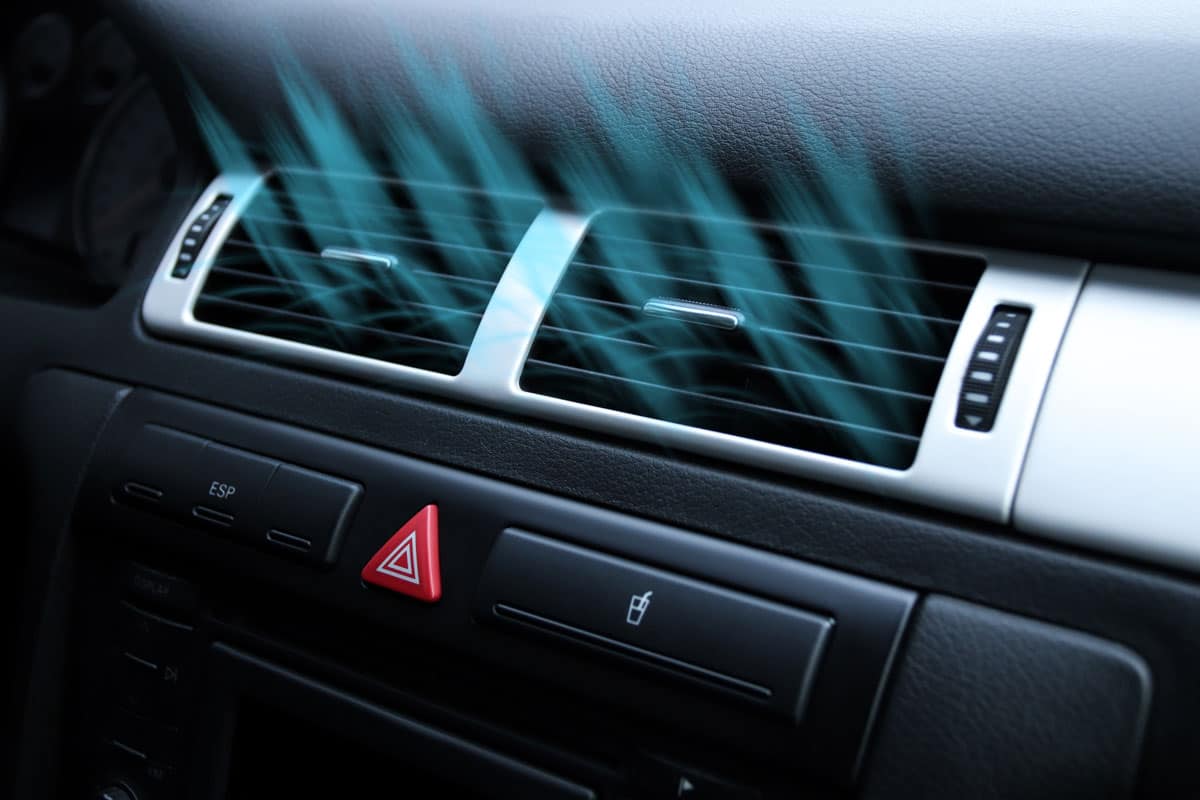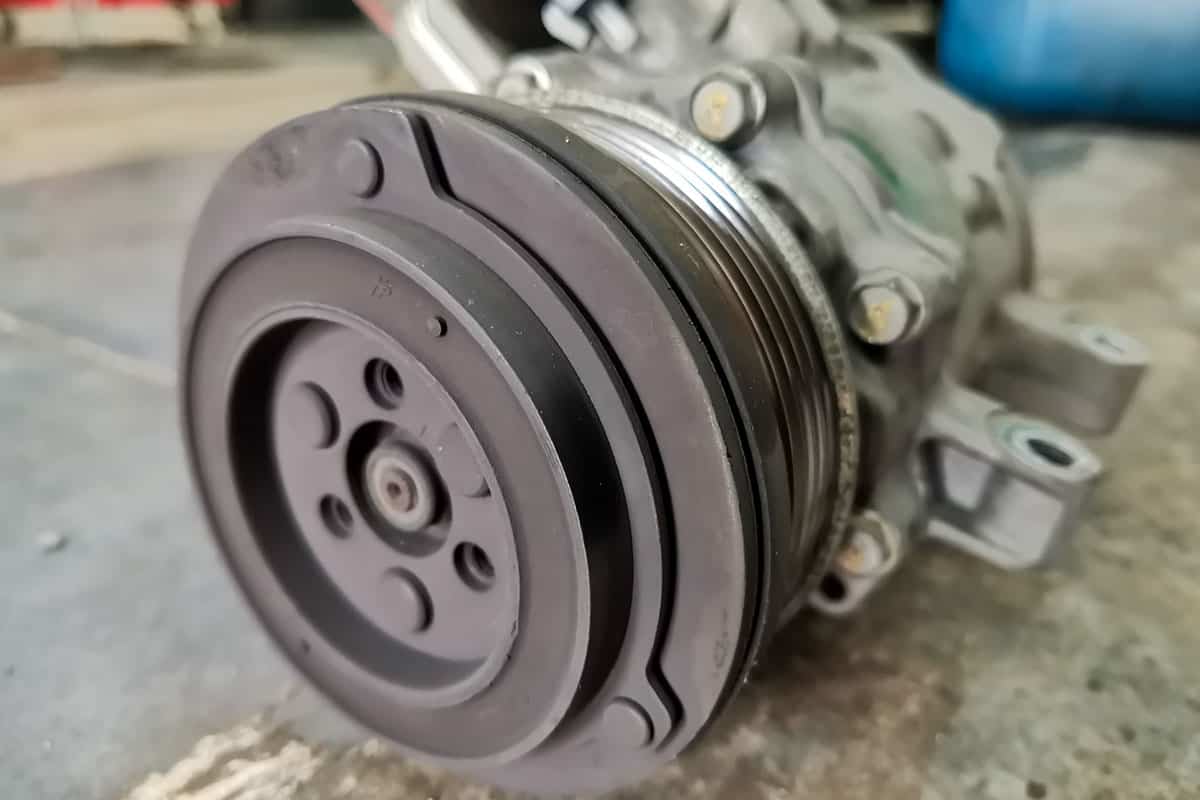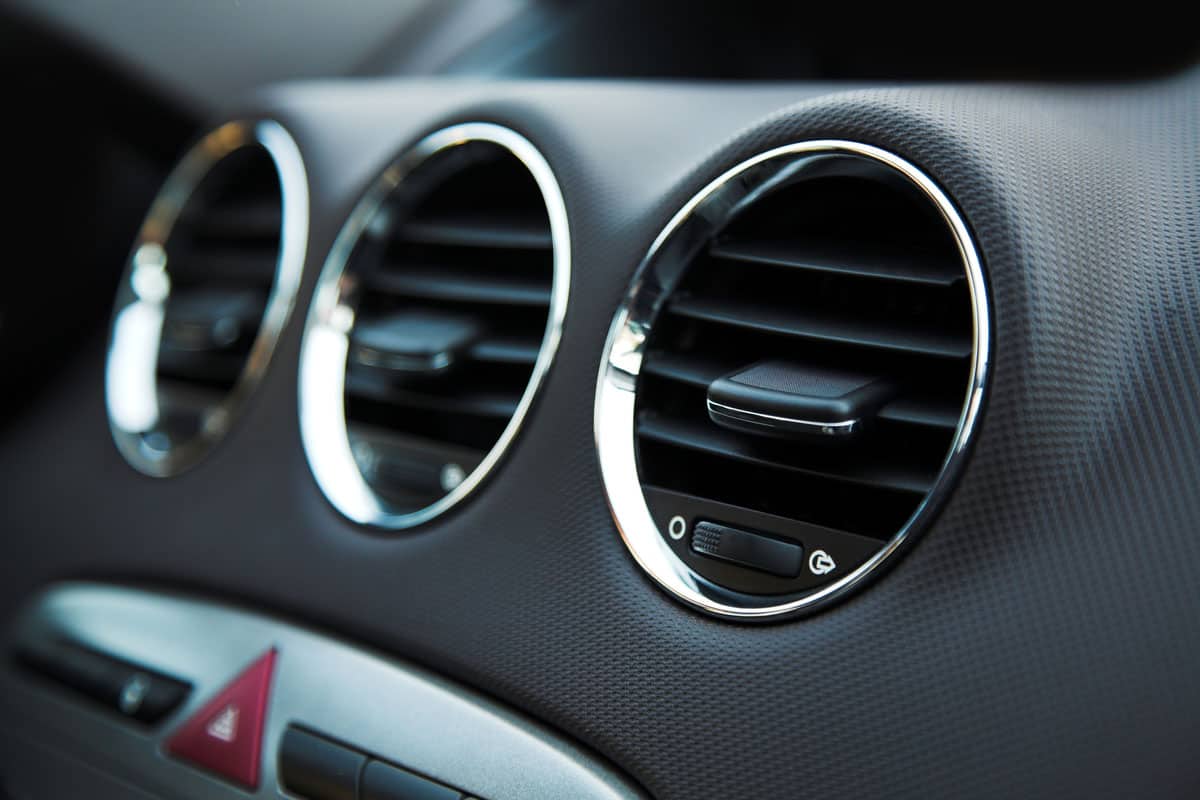Your car’s AC system is acting up and you think that it’s because it has an excessive amount of refrigerant. And now you’re wondering what sound an overcharged AC makes. We’re curious, too. So we researched this concern for your convenience to find the following answer.
An overcharged AC often emits sounds like buzzing, rattling, or knocking. The sound often comes from the additional strain experienced by the compressor. You’ll likely hear the noise when the excess amount of refrigerant passes through a tiny nozzle in the system.
Take note that an overcharged AC may not be the only possible culprit behind the noise you hear from your vehicle. So continue reading as we talk about other potential culprits to the buzzing, rattling, or knocking sounds you hear from your car.
How Do You Know If Your Car AC Is Overcharged?
![Air conditioning system in a modern car, What Does An Overcharged AC Sound Like? [What Other Problems Have Similar Sounds?]](https://vehq.com/wp-content/uploads/2022/10/11What-Does-An-Overcharged-AC-Sound-Like-What-Other-Problems-Have-Similar-Sounds.png)
Aside from the buzzing, rattling, or knocking noises you hear from your car’s AC, other signs that may indicate the cooling system has more refrigerant than recommended are:
Insufficient Cooling

Overcharging a car’s AC may lead to inefficient cooling performance because the system’s components don’t have adequate room for depressurizing the refrigerant. If left unchecked, the cooling system may also lead to a complete shutdown.
Reduced Vehicle Performance

Additional strain may also fall upon your car’s engine if the AC system has more refrigerant than recommended. This is because the AC's compressor draws more power than normal from the engine, reducing the vehicle's overall performance.
Compressor Failure

The compressor is like the heart of the vehicle’s AC system. Putting additional stress on this component by filling it up with extra refrigerant can cause it to fail. Doing so might also result in other parts ceasing to function, particularly the system's valves and seals.
What Does It Mean If Your Car Has A Buzzing Noise?
If you can hear the buzzing or humming noise coming from the AC’s vents, it might be the cooling unit that’s making the noise. Otherwise, the sound may come from other sources, such as:
- Low lubricant for the differential
- Transmission fault
- Worn wheel bearings
Why Is My Car Making A Rattling Or Knocking Noise?
Make sure that your car is in a safe spot when checking the rattling or knocking noise. Start by turning on the AC at its lowest setting if the noise comes from the vent. If it does, the problem may lie with the cooling system.
If not, the sound may stem from other underlying issues like:
- Loose fasteners on the doors, windows, or cargo
- Unsecure exhaust
- Damaged catalytic converter
- Worn heat shield
- Drive or timing belt needs a replacement
What Do You Do If Your AC In Your Car Is Overcharged?

You need to bleed your car’s AC if you overcharge it with refrigerant. But before you proceed with this task, make sure that you’re following proper safety in handling the product. Some of these preventive measures to follow are:
- Make sure to use the refrigerant in a well-ventilated area.
- Protect your eyes, hands, and bare skin by wearing proper safety gear (such as goggles, gloves, and long-sleeved clothing).
- Don’t place the refrigerant can in or around hot objects and places.
- Read the manufacturer’s instructions before using the refrigerant to know if you need to complete certain steps first.
- Check your vehicle’s owner’s manual for the right refrigerant to use, preventing significant harm to the AC system.
Once you secure yourself and the area, continue this procedure by following these steps:
What You’ll Need
- Automotive AC refrigerant
- Manifold gauges
Step-By-Step Guide
- Turn off the engine and engage the hand or parking brake.
- Allow the engine to cool before opening the hood.
- With the hood opened, attach one of the hoses from the AC manifold gauge to the car’s AC’s low line terminal.
- Connect the other end of the hose to the refrigerant’s container.
- Ignite the car's engine and turn on the AC. Doing so should make the needle on the manifold gauge reach the red zone.
- Open the valve on the manifold gauge repeatedly. You should see the needle in the gauge move from the red to the yellow zone.
- Stop bleeding refrigerant from the AC when the needle reaches the green zone.
- Turn off the car’s AC and engine.
- Disconnect the hose from the AC’s low line and return the cover to that terminal.
- Close the hood and turn on the AC in your car again to check if it’s working as expected.
Check out this R134A refrigerant recharge kit on Amazon.
Tip: You can wrap a cloth or towel around the refrigerant’s container. That way, you can reduce the discomfort when touching the cold bottle.
You can also watch the video for a visual guide to this procedure:
At this point, you might also be wondering about the potential dangers of a Freon leak in your car. If so, you can read our post highlighting that topic to learn more.
How Much Does It Cost To Bleed Freon From A Car AC?
Prepare to spend approximately $150 to $300 to let professional automotive technicians bleed excess Freon from your car’s AC for you. You can take advantage of these expert services if you believe you don’t have the confidence or skill to remove the excess refrigerant from your vehicle.
How Much Refrigerant Does My Car Need?

Typically, car ACs require about 28 to 32 ounces of refrigerant to perform optimally. However, large vehicles may need more than that range. So it’s a good idea to check your vehicle’s owner’s manual before you recharge your car’s cooling unit to prevent issues like overcharging.
Don’t forget to check out our post on how to use R134A refrigerant to learn the steps to recharge your vehicle’s AC properly.
How Do You Replace A Car AC Compressor?

You may need to replace your car’s AC compressor if you didn’t bleed the excess refrigerant from the cooling system sooner than needed.
But make sure to purchase and install the correct compressor for your specific vehicle. Don’t attempt to install an automotive AC compressor that doesn’t fit your car, which may otherwise lead to additional repair and replacement expenses.
Once you have the correct compressor, continue this process by following these general steps:
What You’ll Need
- Floor jack
- Jack stands
- Wheel chocks
- Lug wrench
- Socket wrench set
- Extension bar
- Replacement AC compressor
Step-By-Step Guide
- Turn off the engine and allow it to cool for a few minutes. Open the hood afterward.
- Raise one side of the car with the floor jack. Place jack stands underneath the chassis to support the vehicle’s weight if the floor jack fails.
- Chock the wheels and engage the hand or parking brake to prevent the car from moving while you’re working on it.
- Remove the wheel assembly, which should expose the cover for the AC compressor.
- Unscrew the bolts securing the cover to expose the AC compressor.
- Bleed all the refrigerant from the AC system (follow the steps from a previous section in this post for this step).
- Loosen the locking nut securing the AC’s belt. Then, loosen the adjustment bolts on the AC belt assembly.
- Slide the AC belt away from the tensioner.
- Detach the AC compressor coil by removing its plastic connector from its attachment.
- Remove the bolts securing the low- and high-pressure lines on the AC system.
- Unscrew the four bolts securing the AC compressor to the engine assembly.
- Pull out the old AC compressor from its mount. Next, install the new AC compressor in the same location.
- Go through the steps in reverse order to reinstall the parts you removed.
- Charge the AC system with a fresh batch of refrigerant.
- Turn on your vehicle’s engine and AC to check if any unwanted sound from the cooling system persists.
Check out this car AC compressor on Amazon.
Take note that a faulty AC compressor may also indicate that you need to replace the cooling system’s receiver/drier. If not, you might need to replace the AC’s accumulator.
Watch this clip if you need a visual representation of this procedure:
Also, watch the video below if you need help with removing your car’s wheel:
Final Thoughts

Remember, check the AC’s vents if you hear buzzing, rattling, or knocking from your car. If the noise doesn’t come from the cooling system, check the other parts of your vehicle.
At this point, you shouldn’t use your car until you fix the source of the problem. That way, you can prevent possible hazards, which might otherwise lead to accidents and injuries.


